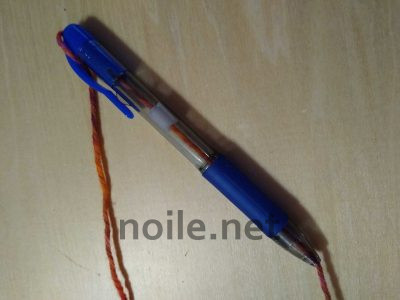I found a better way to fidget! (Also an occasionally frustrating one, but nevermind.) These are stressful times, and I, at least, need all the tools for dealing with them.

Photo of a wooden sock loom with white plastic pegs,
warped with orange yarn.
This sock loom, once a sock is underway, provides an almost zen-like activity.
Many years ago, I knit a little bit, but my hands won´t support renewing that hobby at this point, and I´ve mostly forgotten — or just half remembered — whatever I knew then. The sock loom essentially does the ´remembering´ for me, and also lets me see the stitches clearly.
There´s a learning curve, though. I made a short practice part-of-a-sock to get used to the loom, and then most-of-a-sock, which convinced me, along with the first sample, that the yarns I was using on this ´fine´ (presumable yarn weight 1 or 2) was actually too fine, at least for my skill level.
So I switched to a slightly heavier yarns, from my weaving stash. It´s really too thick for everyday, but will make excellent bed socks.

Photo of an orange, variegated, knit sock
with a twist curving around the foot and leg.
It also splits like mad, and has a serious twist which I couldn´t fight. And to which I contributed by not quite getting the cuff right. Sigh.
The most useful tutorial I found was this one: Knit Socks on a Sock Loom The Crochet Crowd It´s very clear, and made getting used to the loom much easier than I´d expected.
The narrator also shares a brilliant trick; he uses an altered pen to wind yarn around the loom pegs. This is not only quick and efficient, but I found that it also automatically created the right tension. A lifesaver!

Image of a blue pen with the cartridge removed and
orange yarn running through it.
I have still not regained my grafting skills, but The Knitting Squirrel has the most useful instructions (with photos!) I´ve seen for closing a sock toe using what was formerly called, not for any good reason, the Kitchener stitch. And, no, I still can´t do that neatly or well. But onward and upward!
